Adriacom I Business Services & Immigration
Montenegro Awaits - Let's Make it Yours.
Kotor City Walls
You don’t have to look far to see marks from Kotor’s tumultuous past, giving continuous stout resistance to pirates and invaders throughout the centuries. Ottoman invasions got so bad in the 16th century that many neighboring coastal towns such as Risan and Perast had to succumb to Ottoman dominance.
Kotor’s fortified city walls stand as symbols of past generations’ incessant fears of possible attacks that plagued their beautiful town. Kotor was founded by the Romans in 168 BC, and the town’s original name Ascrivium dates back to these times as well. Serious works on Kotor’s defensive system started in the 6th century with the building of the Kotor Fortress which was commissioned by Eastern Roman Emperor Justinian I.
Table of Contents
Toggle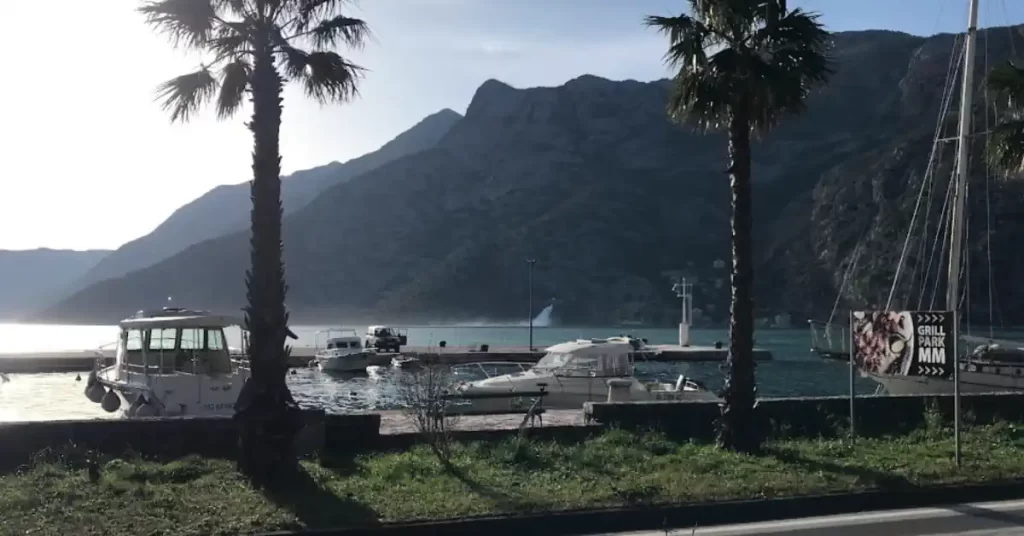
Risan
Known for its Roman Mosaics and laid-back vibes, Risan is the oldest settlement in the Bay of Kotor, boasting plenty of natural beauty and crystal-clear waters.
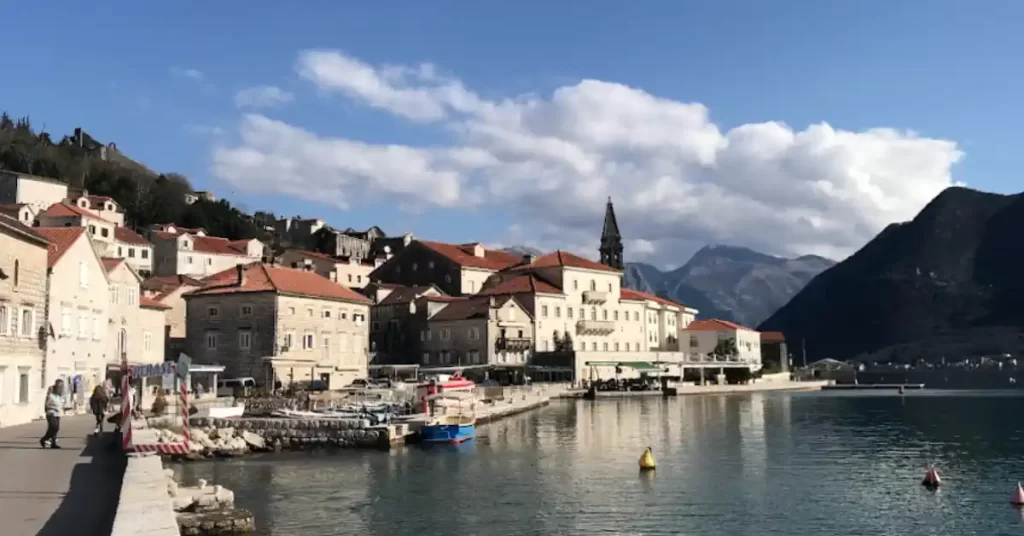
Perast
No trip to Montenegro is complete without visiting Perast, a picturesque coastal town between Herceg Novi and Kotor with a rich naval history.
The first city walls were built in the 9th century, but they were entirely rebuilt during the Venetian Period (1420 – 1797). Together with other city walls in the Mediterranean, these Venetian Works of Defense have been listed as a UNESCO World Heritage Site since 1979, shortly after the devastating earthquake in Montenegro.
The 4,5-kilometers-long city walls do not simply encircle Kotor’s Old Town but also move up vertically and include a series of bastions, the Our Lady of Our Remedy Church, the San Giovanni Fortress at 280 meters above sea level, and three city gates. Only the western flank of the old town is exposed to the sea.
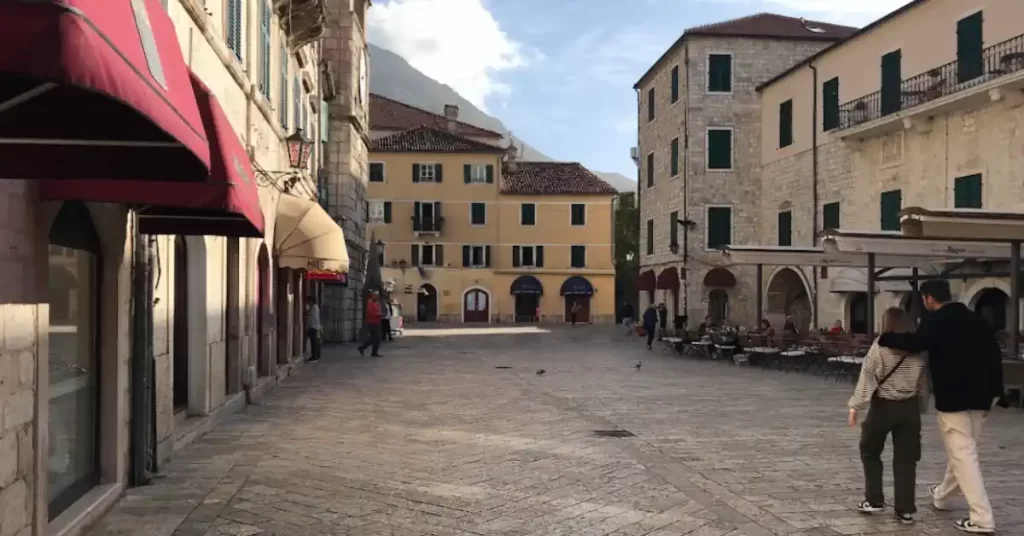
Kotor’s Old Town
Narrow cobblestone streets lined with intimate shops and boutiques and leafed town squares, serving delicious Adriatic cuisine make Kotor’s Old Town a must-visit.
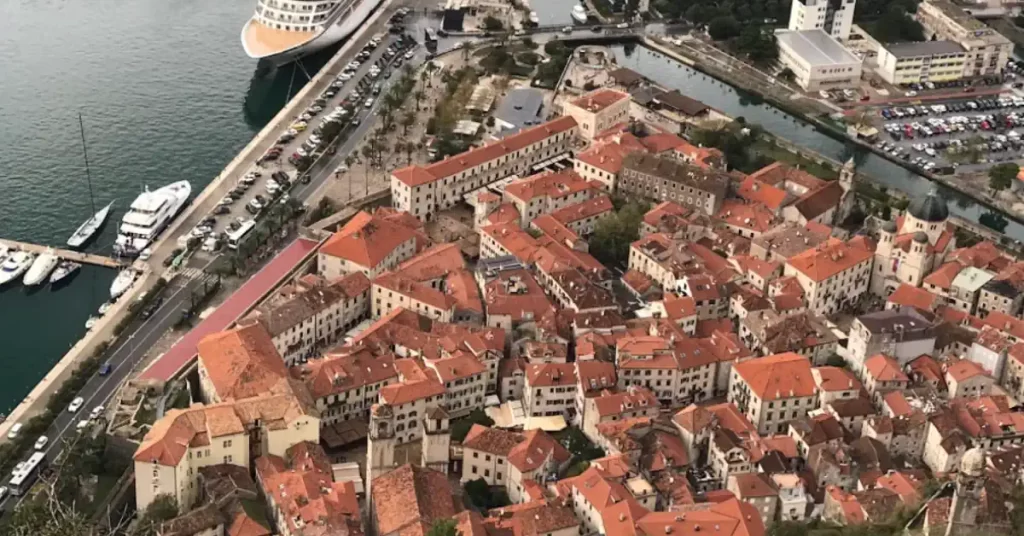
Kotor
Kotor is more attractive than ever, in large parts due to careful city planning and extensive renovation measures in its historic center.
Kotor’s City Gates
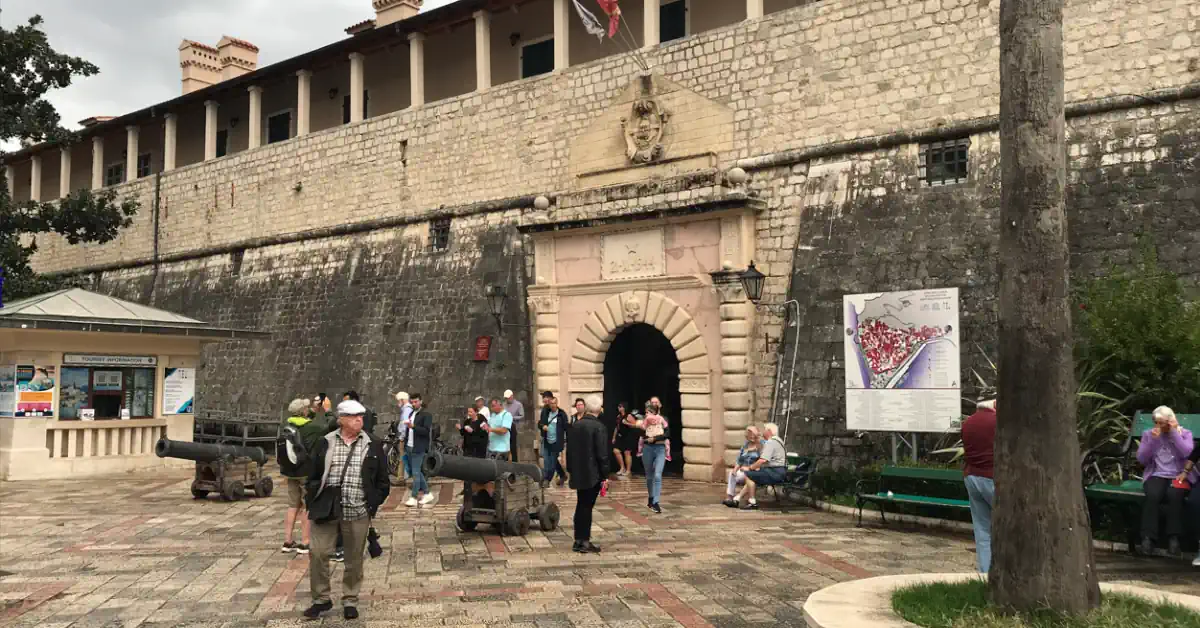
There are three gates piercing Kotor’s City Walls: the Northern Gate, the Gurdic Gate, and the Sea Gate which was built in 1555, in the aftermath of the Siege of Castelnuovo and the Battle of Perast, which posed a large threat to Kotor’s safety. Invading Ottoman forces were successful in capturing the northern part of the Bay of Kotor, including Risan and Herceg Novi, but Kotor and Perast never had to surrender.
Due to its strategic role in defending the walled city, Kotor’s vaulted Sea Gate occupies one of the wall’s thickest and tallest stretches, opening up onto the Square of Arms. A few meters south of this city gate you can see a weathered and chipped relief of the Winged Lion of Venice, symbolizing the Republic of Venice’s dominance over this region.

Bay of Kotor
As one of Montenegro’s most popular regions, this uniquely wild and beautiful area around the Bay of Kotor encompasses steep hillsides and charming coastal towns.

Square of Arms
The Square of Arms is Kotor’s largest town square. Previously an important place to store ammunition and weapons, it is now a vibrant gathering spot.
The Northern Gate was built in response to the Ottoman invasion of 1539 and was swiftly completed in the ensuing months. It is the only point of entry from the Scurda River, a short stream that acts as a natural moat to deter enemies. The Northern Gate is decorated with sculptured reliefs of Venetian Emblems, including the Lion of Saint Mark.
The Gurdic Gate is the only one with a wooden drawbridge and consists of three separate barriers, built over several centuries. The exterior gate was added in the mid-18th century while the original gate (the one in the middle) dates back to the 13th century, making this entry point one of the oldest and most impeccable parts of these ancient city walls.
This inner Gurdic Gate was reinforced at the start of the 16th century, most likely under the instructions of Giangirolamo Sanmicheli, a renowned Venetian architect who was also responsible for the St. Nicholas’ Fortress in Sibenik, Croatia. On the southern side of the gate are steps giving access to the city walls. In medieval times, all gates would close by nightfall to ensure safety for Kotor residents.
A series of bastions were seamlessly integrated into the defensive ramparts to protect the city gates from potential attacks. The Bembo Bastion and the Kampana Tower guarded the northern entrance into the town while the Korner and Riva Bastions watched over the Sea Gate, and the Gurdic Bastion the gate with the same name.
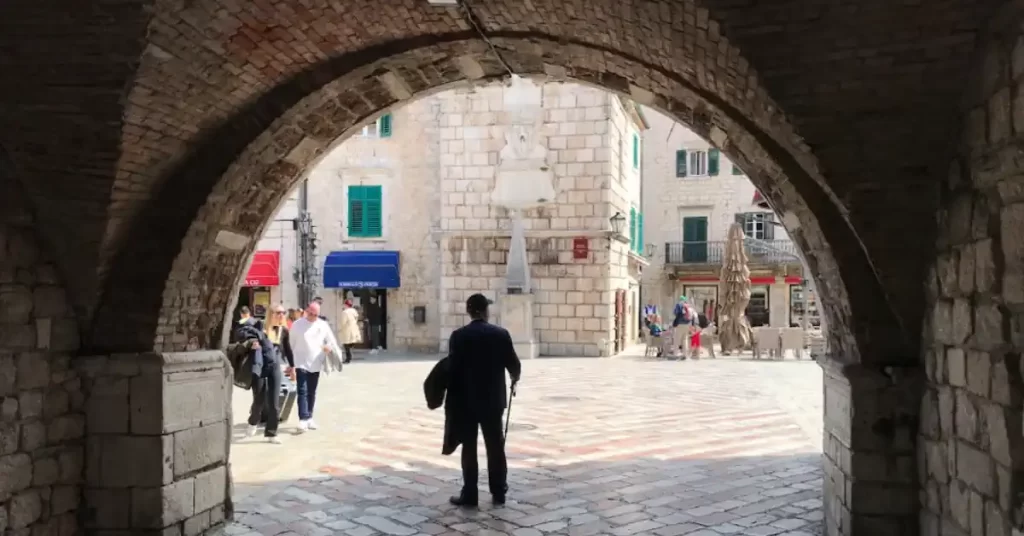
The Sea Gate
One of three entrances into the walled city, the beautifully adorned Sea Gate sits opposite the cruise port and opens up onto the Square of Arms.
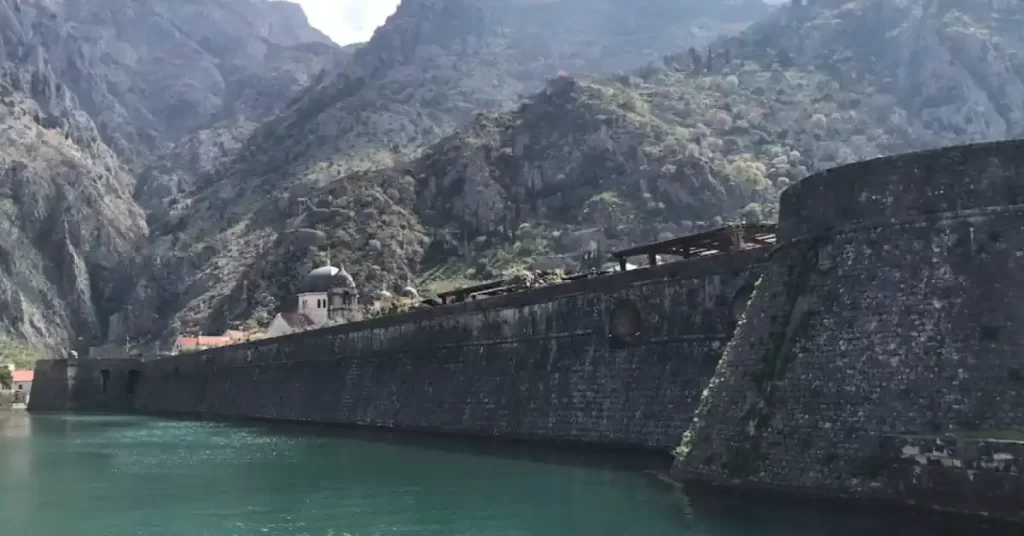
Kampana Tower
The Kampana Tower is one of the most prominent features of the city walls. Its bulky bell-shaped form can already be seen from far away when approaching Kotor.
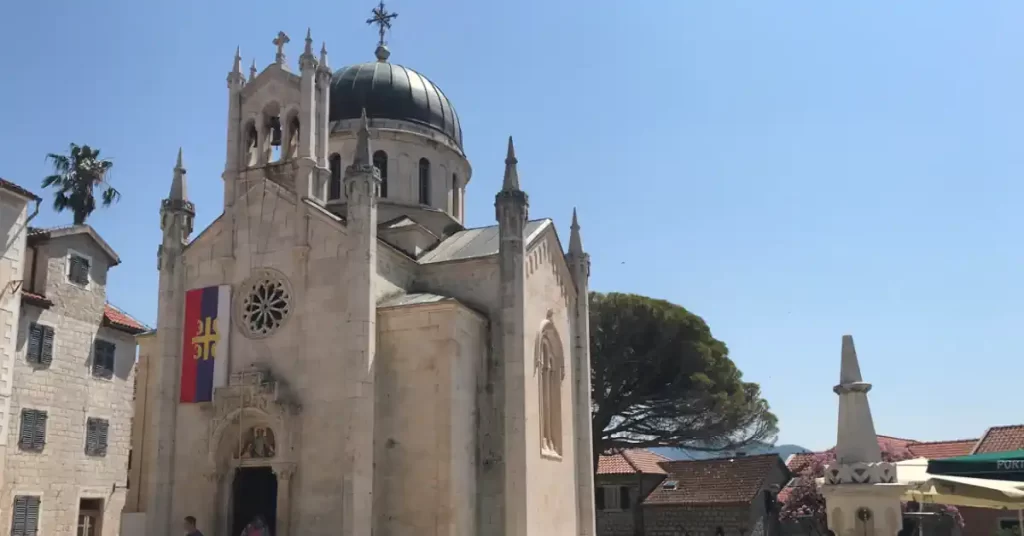
Herceg Novi
The smooth waters of the Adriatic mirror the encompassing mountains like a gleaming mirror, creating a feeling of total serenity in Herceg Novi that is unrivaled elsewhere.
Climbing the City Walls

Sitting over the roofs of the old town, the San Giovanni Fortress is an imposing structure, intertwined in the remains of the city walls. Climbing the 1,350 or so stairs to the Kotor Fortress will take a reasonably fit person 2 – 3 hours to complete back and forth, with enough time allocated for taking pictures and soaking up the incredible surroundings.
Roughly halfway sits the medieval Church of Our Lady of Remedy which offers one of the best photo spots along the way. The trail starts in the old town, either from the trailhead adjacent to the Northern Gate or from the other in proximity to Kotor Cathedral. There is an admission charge of 15€ per person at the time of this writing.
It is an exciting experience to walk up the City Walls and a must-do activity when visiting Kotor. From atop, a breathtaking view unfolds over the impressive zig-zagging walls and vast parts of the bay. The Venetians surely did not make it easy for pirates and invaders to get over these ramparts, which are up to twenty meters high and 16 meters thick.
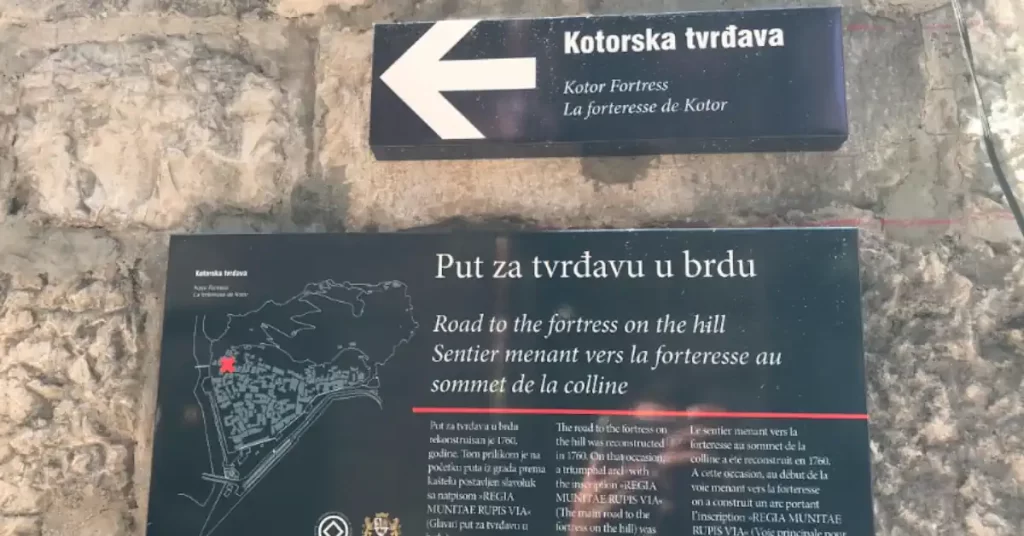
Kotor Fortress
Views from the top over the old town and the shimmering Bay of Kotor are breathtaking. Visiting Kotor Fortress is a must-do activity.

St. Tryphon’s Cathedral
Kotor Cathedral was built in 1166 and is one of the most enchanting structures in the old town. You will recognize it by its asymmetrical twin bell tower.
The Ladder of Kotor
The Ladder of Kotor offers a unique angle on the ancient city walls. This strenuous but rewarding hiking trail starts just outside of the old town, also close to the Northern Gate. and ends a kilometer above Kotor’s Old Town, on the Kotor Serpentine Road. Hiking the entire trail takes roughly three hours to complete in one direction.
A small unassuming mountain cafe, serving fresh local produce, sits halfway between the trailhead and Kotor Fortress. Its inviting outdoor terrace offers panoramic views of Kotor and is the perfect spot for taking a short break and enjoying the beautiful surroundings.
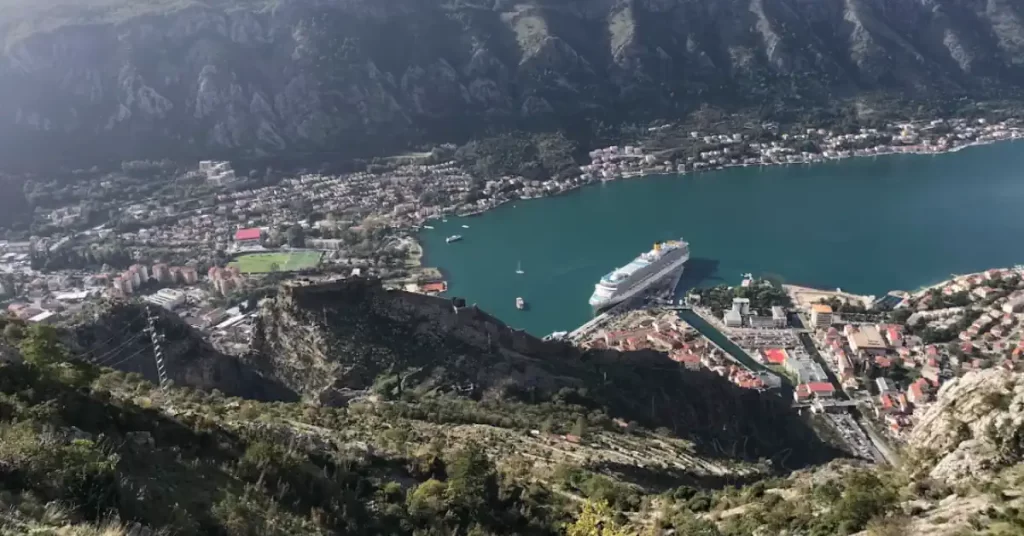
Ladder of Kotor
The Ladder of Kotor is a challenging 6.5-km-hike, offering breathtaking views of the Bay of Kotor and Kotor Old Town.